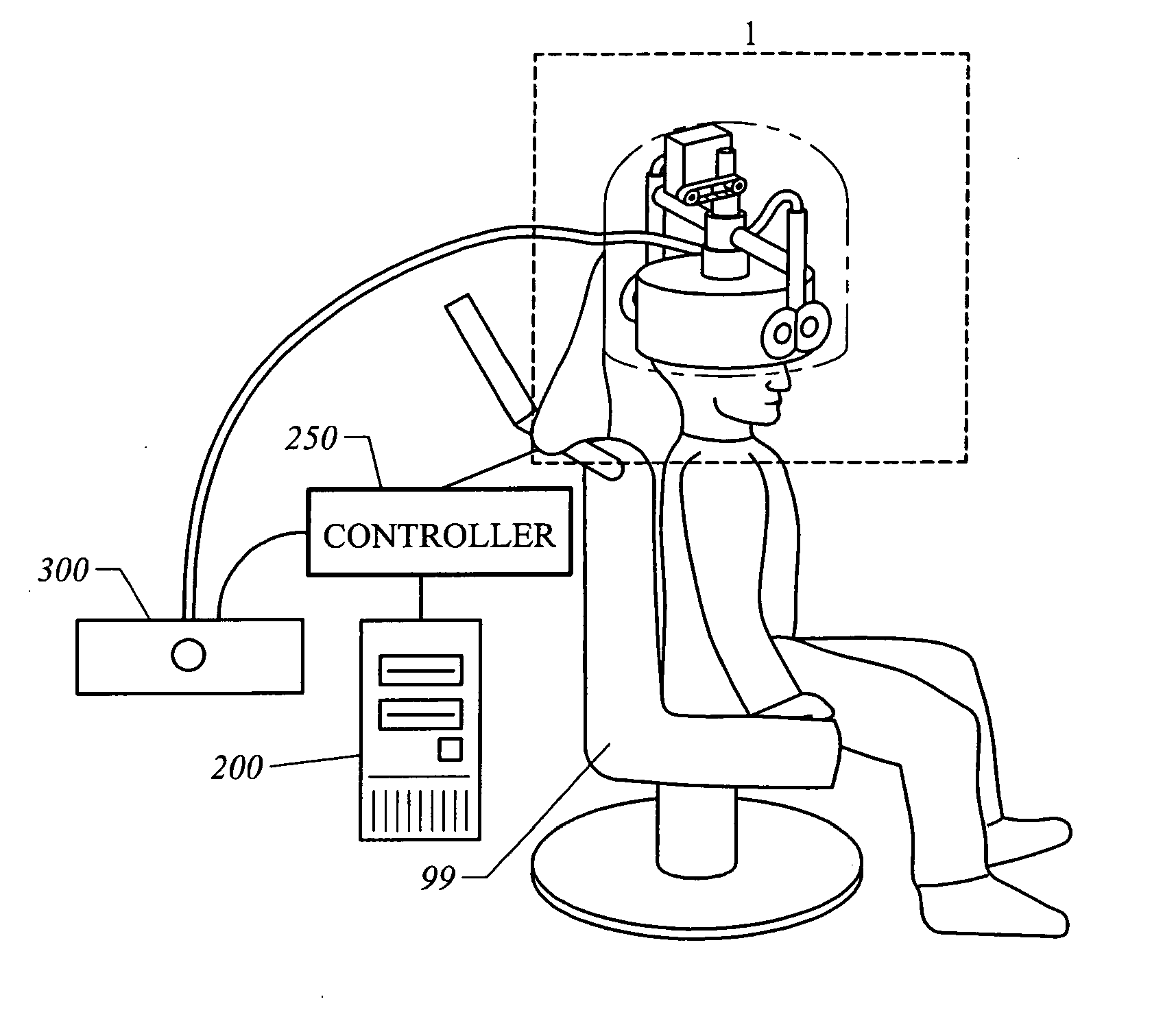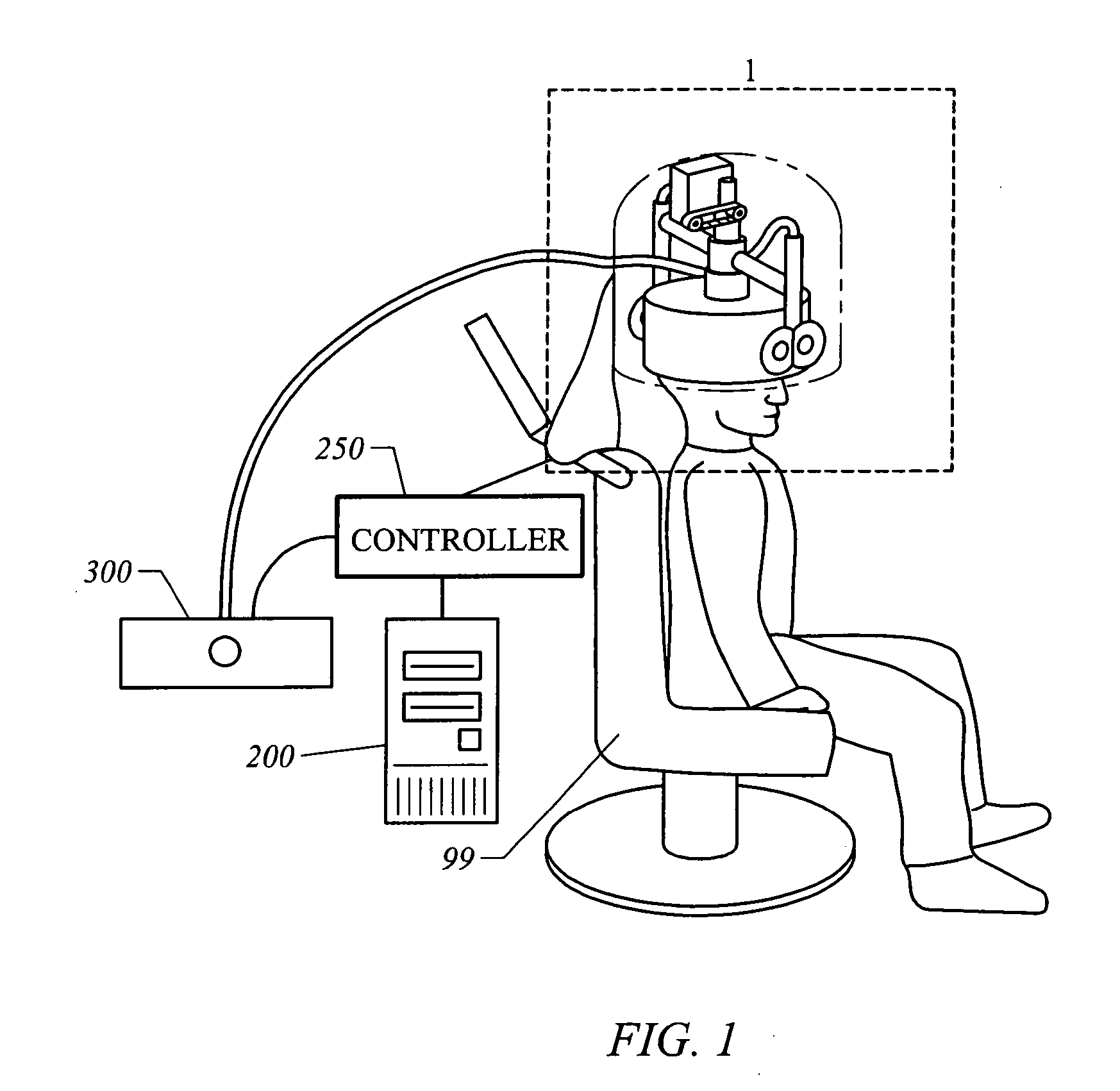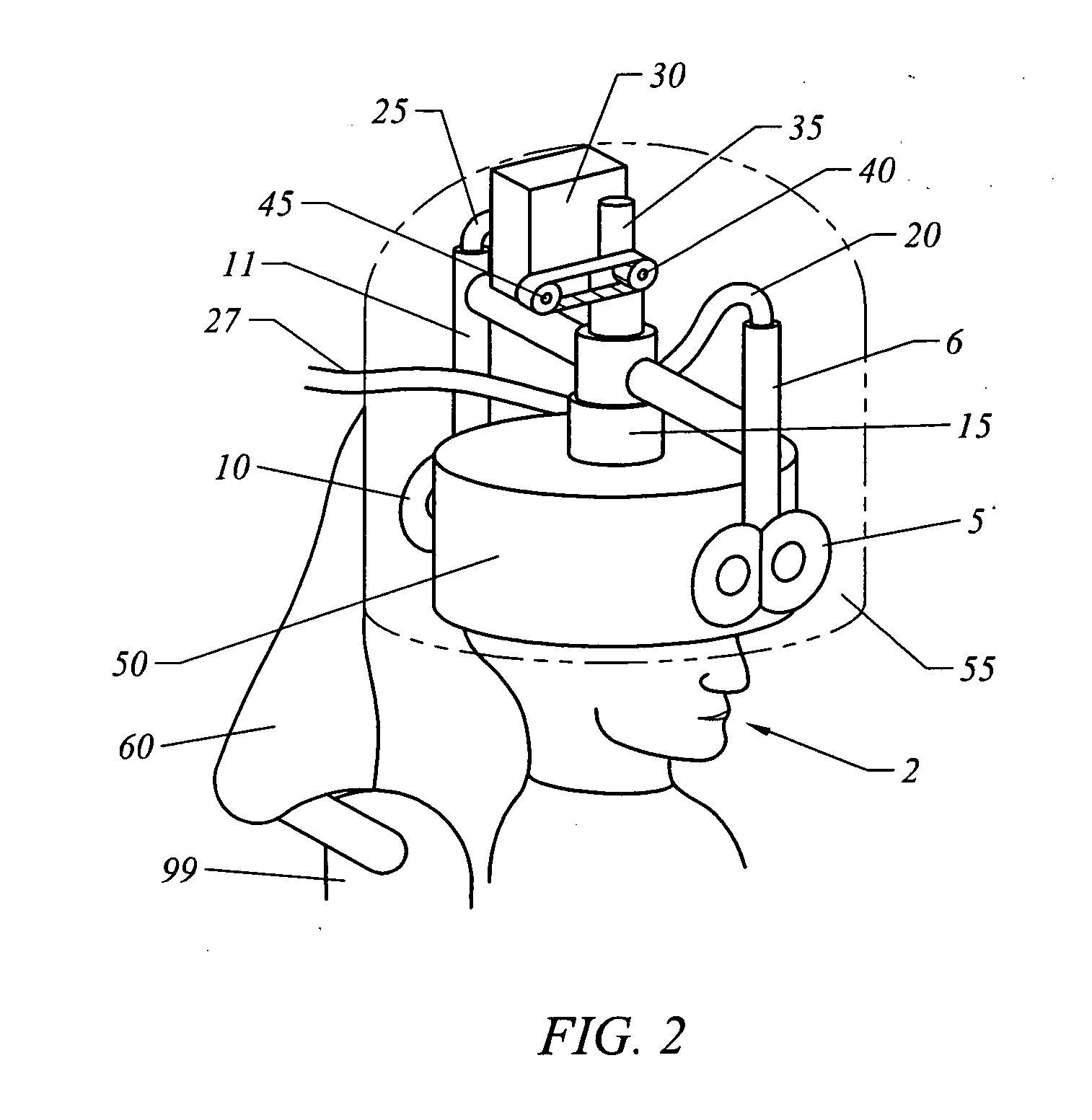Robotic apparatus for targeting and producing deep, focused transcranial magnetic stimulation
a transcranial magnetic stimulation and robotic device technology, applied in the field of electromagnetically stimulating target areas, can solve the problems of limited tms and rtms instrumentation, less than satisfactory, and configuration may not be able to target for selective stimulation of targeted deep brain structures while sparing superficial structures
- Summary
- Abstract
- Description
- Claims
- Application Information
AI Technical Summary
Benefits of technology
Problems solved by technology
Method used
Image
Examples
Embodiment Construction
[0039] In the description that follows, the present invention will be described in reference to embodiments that utilize computers and electromechanical devices to focus electromagnetic energy to target areas. More specifically, the embodiments will be described in reference to preferred embodiments. However, embodiments of the invention are limited to any particular configuration, architecture, or specific implementation. Therefore, the description of the embodiments that follows is for purposes of illustration and not limitation.
[0040] Historically the magnets used for Transcranial Magnetic Stimulation (whether single pulse or repetitive (so called rTMS)) produce magnetic fields that affect superficial structures (those close to the magnets) and not deep structures. Impacting deeper structure cannot be practically achieved to by simply increasing the strength of the magnetic field. The field strength of a magnet falls off rapidly with distance (one over the square of the distance...
PUM
 Login to View More
Login to View More Abstract
Description
Claims
Application Information
 Login to View More
Login to View More - R&D
- Intellectual Property
- Life Sciences
- Materials
- Tech Scout
- Unparalleled Data Quality
- Higher Quality Content
- 60% Fewer Hallucinations
Browse by: Latest US Patents, China's latest patents, Technical Efficacy Thesaurus, Application Domain, Technology Topic, Popular Technical Reports.
© 2025 PatSnap. All rights reserved.Legal|Privacy policy|Modern Slavery Act Transparency Statement|Sitemap|About US| Contact US: help@patsnap.com



